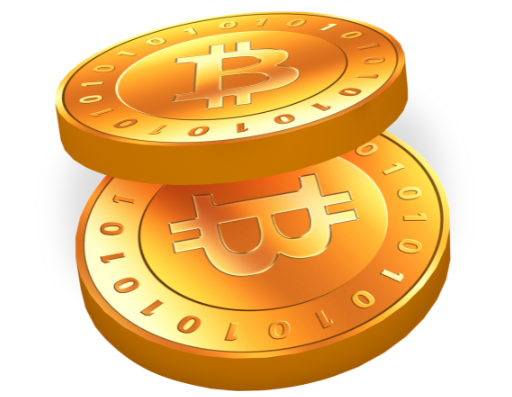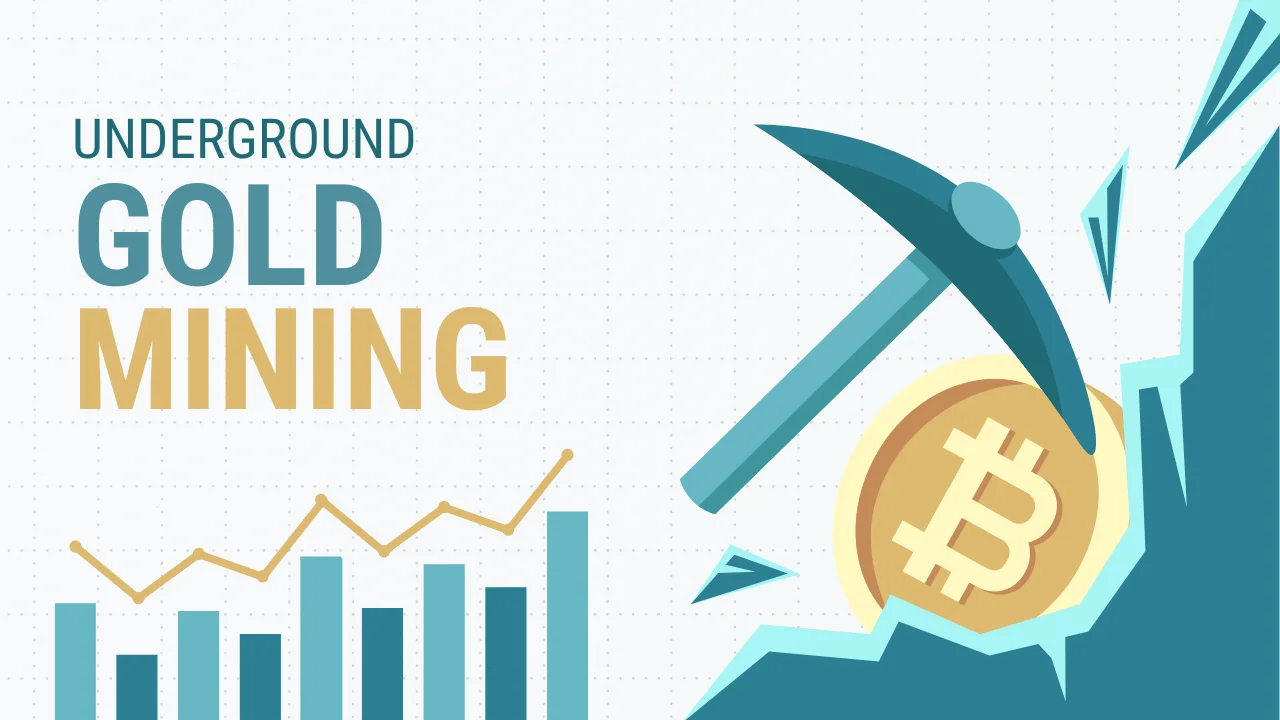A crucial sector of the economy, underground gold mining extracts precious metal from underground gold veins. To get gold out of deeper mineral deposits, this method is necessary, but it’s different from the more obvious surface mining techniques. Underground mining aims to minimise environmental impact while maintaining efficiency through thorough exploration, stringent safety measures, and the use of advanced technologies. Subterranean gold mining is the subject of this article, which delves into the topic by describing the process, discussing technical developments, outlining safety procedures, and touching on the relevant economic and environmental factors.
Understanding Underground Gold Mining
The goal of underground gold mining is to obtain ore from places that would otherwise be inaccessible. Underground mining necessitates exacting procedures in order to access deeper gold reserves, in contrast to open-pit mining that removes massive amounts of earth to access shallow mineral deposits. The greater dangers of working in underground environments make this process more labor-intensive and necessitate a higher degree of technical knowledge as well as stricter safety protocols.
Key Techniques in Underground Gold Mining
Exploration and Reserve Identification
In order to find productive gold deposits, thorough geological investigations are carried out prior to mining operations. In order to map out areas rich in gold, techniques such as geophysical and geochemical analysis, as well as drilling, are used. These methods give a detailed understanding of the underground environment. In order to ascertain whether or not a mining operation will be profitable, precise exploration is required.
Shaft and Tunnel Construction
The development of a mine can start with the construction of shafts and tunnels once a deposit has been identified. Personnel, machinery, and extracted materials must be able to travel through these buildings. The safety of the miners depends on these tunnels not collapsing, so they are frequently fortified with concrete or steel.
Ore Extraction Methods
There are a number of methods used in the actual process of mining for gold. In order to make the ore easier to work with, traditional methods involve drilling and blasting. To increase extraction efficiency while decreasing physical impact on the mine’s surroundings, more contemporary and less disruptive methods are being considered, such as hydraulic drilling and other machinery.
Ore Transportation and Processing
Mine cars or conveyor systems are usually used to bring the ore to the surface after extraction. Crushing, milling, and chemical treatment (often with cyanide) are some of the processing steps that the ore goes through once it reaches the surface in order to extract the gold. The yield and quality of the final product are determined by the processing stage, which is why it is critical.
Environmental Management and Reclamation
The goal of the operations carried out after mining is to reduce the negative effects on the environment. This involves managing and treating waste, restoring mine sites, and making sure the area is either used for new commercial or ecological projects or returned to its original state as closely as possible.
Technological Innovations in Underground Gold Mining
Advancements in Drilling Technology
Modern underground gold mining has benefited significantly from advancements in drilling technology. Miners can now safely access deeper gold deposits with enhanced drilling equipment, which offers greater precision and efficiency. By stabilising the mine shafts and lowering the risk of collapses, these technologies increase safety while decreasing the amount of physical labour required.
Automation and Robotics
Many parts of the underground mining industry have been changed by the introduction of robotics and automation. Loaders and drilling rigs that are automated can work in dangerous environments, which is great for worker safety and productivity. Mine conditions monitoring and maintenance in inaccessible areas are two more critical areas where robotics play an essential role.
Real-time Data Analysis
Decisions in underground gold mining can be improved with the help of real-time data collection and analysis technologies. Continuous feedback on a variety of parameters, including air quality, temperature, and structural integrity, is provided by sensors and monitoring systems installed throughout mines. Insights like these allow for safer and more efficient operations by allowing for the prediction and reduction of possible problems.
Safety Systems and Protocols
In underground mining, it is essential to have better safety systems in place, such as better ventilation, emergency response plans, and training programmes for workers. Subterranean settings present their own set of hazards, including the potential for cave-ins, flooding, and toxic gas exposure, which is why these precautions are put in place.
Economic and Environmental Impacts
Economic Contributions of Gold Mining
A large number of people find gainful employment in the gold mining industry, which boosts regional and national economies. For mining communities to prosper even after a mine has stopped operations, the industry’s financial gains must not come at the expense of environmental protection and sustainable practices.
Environmental Considerations and Sustainability
The environmental impacts of underground gold mining, such as the destruction of habitats, contamination of water sources, and inadequate waste management, outweigh the industry’s economic significance. To lessen these effects, modern mines implement cleaner technology, adhere to more stringent environmental regulations, and have thorough reclamation plans to return mining sites to their original condition or put them to good new uses.
Challenges and Solutions in Deep-Level Gold Mining
Managing High Costs and Logistics
Because it requires so much drilling and advanced machinery, deep-level mining is naturally more costly than surface-level mining. Moving personnel and machinery underground and then retrieving the ore from the surface is an extremely expensive ordeal. Some possible solutions include using just-in-time delivery systems, investing in longer-lasting, more efficient machinery, and optimising the allocation of resources.
Enhancing Miner Safety
The hazards of accidents and health problems, like respiratory issues caused by poor air quality, increase as one descends deeper into the mine. Thorough safety protocols must be put in place, along with ongoing training and investments in health monitoring technology. Not only do these safeguard employees, but they also boost productivity by cutting down on interruptions caused by accidents.
Technological Integration
The difficulties of deep-level mining can be greatly reduced by incorporating cutting-edge technology like Internet of Things (IoT) devices. There is no longer any need to expose humans to the dangerous conditions found in deep-level mining thanks to technologies that can automate risky tasks, monitor mine conditions in real-time, and anticipate equipment failures.
Environmental and Regulatory Compliance
Adhering to Environmental Regulations
The mining industry is subject to strict environmental regulations that mandate reclamation efforts and strict limits on pollution and land degradation. Following the rules is essential for long-term success and is mandated by law. Common practices that help mines reduce their environmental footprint include using waste rock to backfill mined-out areas and utilising water treatment plants to manage effluent.
Navigating Complex Permit Processes
Underground gold mining is subject to regulatory hurdles, including the need to navigate complicated permit processes that differ substantially across regions. Environmental impact assessments and community engagement processes may be necessary to ensure compliance, which in turn requires an in-depth knowledge of international and domestic laws. Regulatory bodies and communities can be actively engaged to help projects run more smoothly during approval and operation.
Innovative Approaches to Waste Management
Efficient waste management is crucial for mining operations to reduce their environmental impact. Waste management innovations are crucial, such as recycling mining debris for building materials or turning landfills into parks. These actions aid in conformity with regulations and add to the social licence to operate.
Future Trends in Underground Gold Mining
Towards a More Sustainable Mining Practice
Sustainable practices are becoming more common in the underground gold mining industry. Among these measures are the creation of more environmentally friendly mining chemicals, the installation of water reclamation systems, and the utilisation of renewable energy sources to power mining operations. Such measures lessen mining’s impact on the environment and win over more progressive stakeholders.
Automation and AI in Mining
The mining industry is expected to see a rise in the use of AI and automation. AI has the potential to revolutionise mining planning, automate mundane operations, and improve predictive maintenance. This change not only makes things more efficient and less expensive to run, but it also makes people safer by lowering their exposure to potentially harmful situations.
Local Community Involvement
More community members will be involved in the planning and benefits of mining projects in the future as a result of future underground mining operations. In order to make sure that mining has social support and helps local development, there are measures to take like job training, sharing economic benefits, and using transparent communication strategies.
FAQs
What is the deepest gold mine in the world?
The Mponeng gold mine in South Africa is the deepest in the world, extending more than 4 kilometers below the earth’s surface.
How is gold extracted from ore?
Gold is extracted using several methods, but most commonly through the cyanidation process, where cyanide is used to dissolve and separate gold from the ore.
What are the main risks associated with underground gold mining?
The main risks include cave-ins, flooding, toxic gas exposures, and health impacts from long-term exposure to dust and noise.
How do miners ensure safety in underground mines?
Safety in underground mines is ensured through rigorous training, constant monitoring of air quality, and the use of advanced equipment and protective gear.
Can underground mining be environmentally friendly?
Yes, with the use of sustainable practices such as efficient waste management, low-impact mining techniques, and site rehabilitation, underground mining can reduce its environmental footprint.
Also Read: https://thecryptonewzhub.com/evaluation-of-clustering-in-data-mining/
Conclusion
One of the most important ways to get at one of the most precious commodities on Earth is by using underground gold mining. Constant improvements in technology and practices are making it more efficient and sustainable, despite the fact that it poses substantial environmental, safety, and technical challenges. To keep its credibility and standing with investors and the world at large, the industry must strike a balance between making a profit and being good stewards of the environment.

Brandy Stewart, an enchanting wordsmith and seasoned blogger, weaves compelling narratives that transport readers to uncharted territories. Infused with perceptive viewpoints and dynamic storytelling, Doris exhibits a command of language that enthralls both hearts and minds, leaving a lasting mark on the literary panorama.

